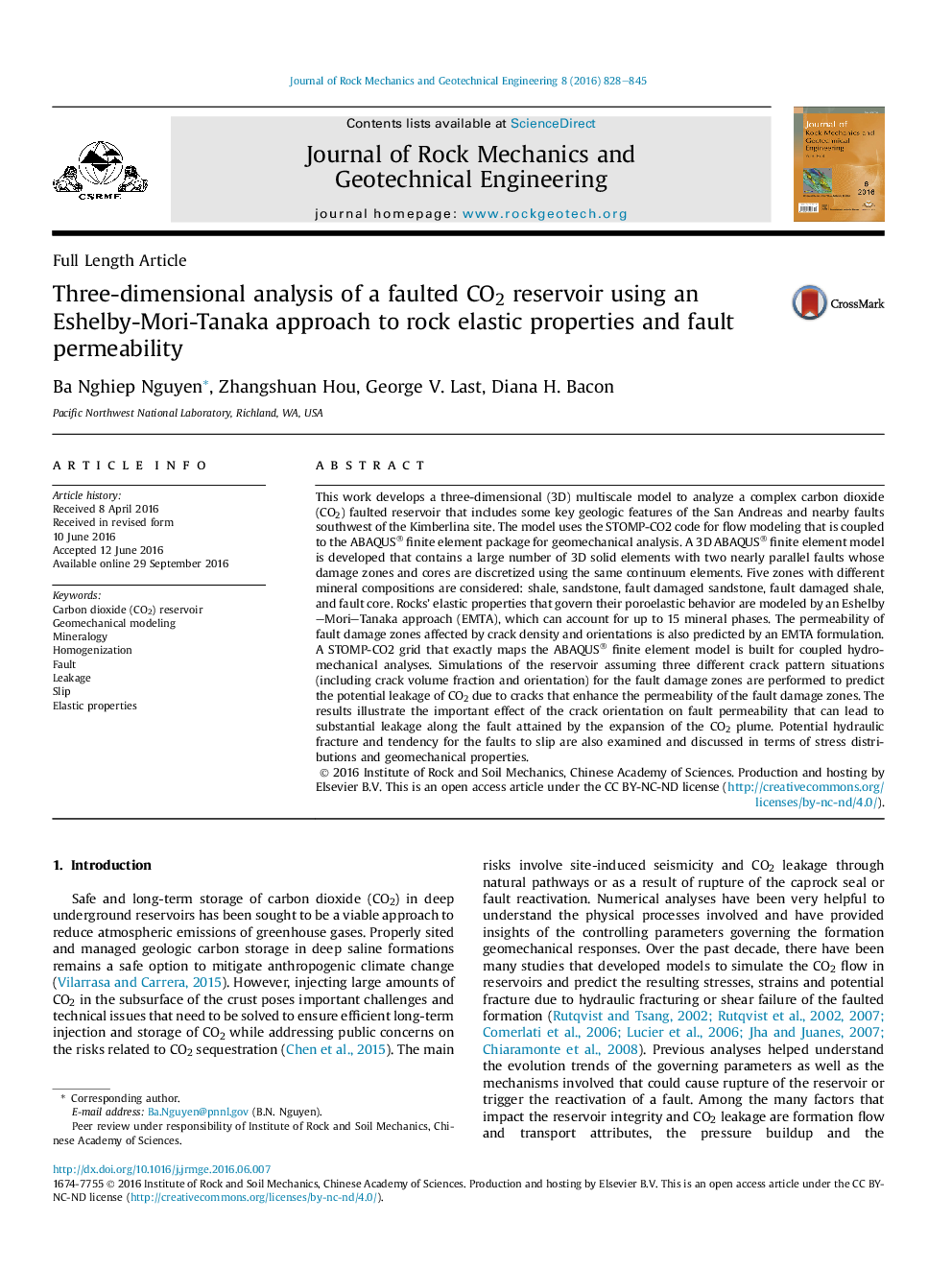| کد مقاله | کد نشریه | سال انتشار | مقاله انگلیسی | نسخه تمام متن |
|---|---|---|---|---|
| 4923807 | 509483 | 2016 | 18 صفحه PDF | دانلود رایگان |

This work develops a three-dimensional (3D) multiscale model to analyze a complex carbon dioxide (CO2) faulted reservoir that includes some key geologic features of the San Andreas and nearby faults southwest of the Kimberlina site. The model uses the STOMP-CO2 code for flow modeling that is coupled to the ABAQUS® finite element package for geomechanical analysis. A 3D ABAQUS® finite element model is developed that contains a large number of 3D solid elements with two nearly parallel faults whose damage zones and cores are discretized using the same continuum elements. Five zones with different mineral compositions are considered: shale, sandstone, fault damaged sandstone, fault damaged shale, and fault core. Rocks' elastic properties that govern their poroelastic behavior are modeled by an Eshelby-Mori-Tanaka approach (EMTA), which can account for up to 15 mineral phases. The permeability of fault damage zones affected by crack density and orientations is also predicted by an EMTA formulation. A STOMP-CO2 grid that exactly maps the ABAQUS® finite element model is built for coupled hydro-mechanical analyses. Simulations of the reservoir assuming three different crack pattern situations (including crack volume fraction and orientation) for the fault damage zones are performed to predict the potential leakage of CO2 due to cracks that enhance the permeability of the fault damage zones. The results illustrate the important effect of the crack orientation on fault permeability that can lead to substantial leakage along the fault attained by the expansion of the CO2 plume. Potential hydraulic fracture and tendency for the faults to slip are also examined and discussed in terms of stress distributions and geomechanical properties.
Journal: Journal of Rock Mechanics and Geotechnical Engineering - Volume 8, Issue 6, December 2016, Pages 828-845